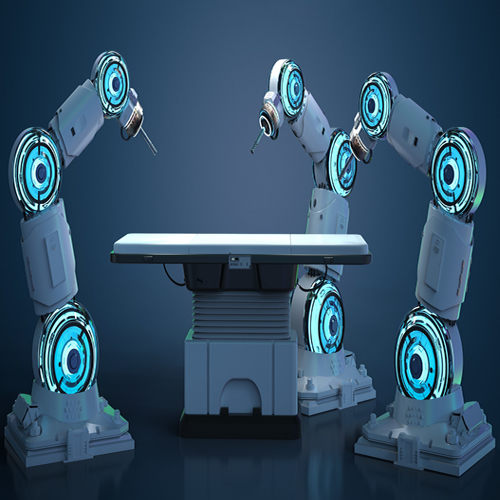Key points from article :
A urologist at the University of Texas successfully performed prostate gland removal using two advanced robotic systems. The procedure combined Levita's Mars platform, which uses magnetic technology, and Intuitive Surgical's Da Vinci SP robot, marking the first time these systems were used together. This innovation allowed the surgical team to manipulate internal organs more precisely and improve access to key pelvic areas, crucial for preserving sexual and urinary functions during the surgery.
The Levita Mars platform provided magnetic positioning to retract tissue accurately, while the Da Vinci SP robot allowed for a single-port approach that minimized incisions. This combination of technologies is seen as a step forward in robotic surgery, offering a more tailored approach for complex surgeries. The success of this surgery demonstrates the potential for using multiple robotic systems in tandem to improve patient outcomes and surgical efficiency.
In related research, Stanford University explored autonomous robotic surgery by training a robot using imitation learning from surgical videos. This method enabled the robot to learn tasks like needle handling and tissue lifting, without the need for complex programming. The robot's ability to perform these tasks autonomously shows promise for reducing the need for human intervention in certain surgical procedures.
By focusing on kinematic calculations, rather than absolute movements, the research team was able to improve the accuracy of the robotic system, allowing it to perform tasks like continuing a procedure after dropping a needle. This marks a significant leap toward more autonomous robots in the operating room, potentially speeding up procedures and reducing errors.
Combining robotic systems like Mars and Da Vinci SP sets a new standard for surgery, emphasizing patient safety and improved outcomes. The integration of multiple systems offers enhanced surgical maneuverability, minimizing incisions and improving precision in delicate surgeries like prostate removal.
The research also showed that imitation learning can reduce the time needed to train surgical robots, making them more efficient in performing a variety of tasks. By using a wide range of surgical footage, robots can quickly adapt to different procedures, leading to faster training and better performance in the operating room. This research was published in a leading medical journal, showcasing the evolving potential of robotic surgery.








